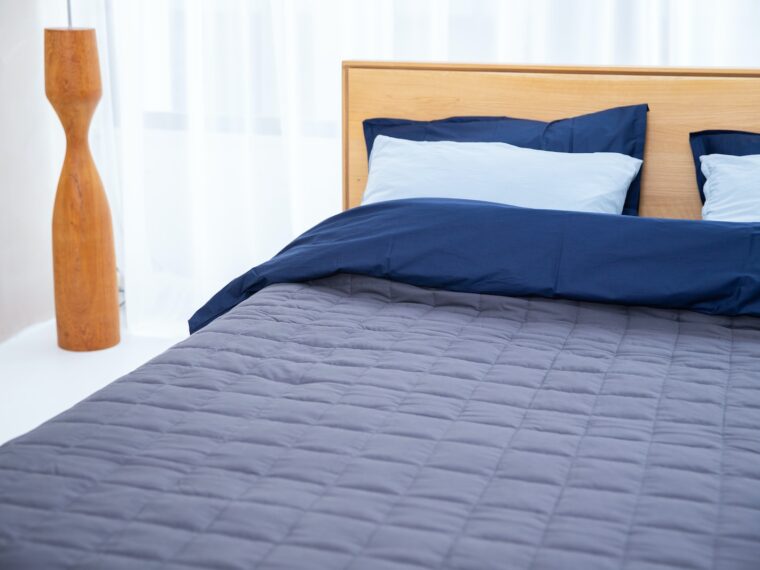Selecting the ideal mattress is one of the most vital decisions you’ll ever make for yourself and your health and well-being. It’s an investment in yourself and in future wellness.
There are various considerations when purchasing a mattress, including body weight, sleep position and personal preferences for materials and feel. You should also keep cost, trial periods and warranties in mind.
Price
One of the main factors to keep in mind when purchasing a mattress is cost. Many shoppers may place more importance on price than quality; however, higher-end mattresses may end up more cost effective over time than their cheaper counterparts that need replacement sooner. Cost factors for mattresses may include firmness, construction and warranty conditions among others.
Firmness: Firmness is one of the key indicators of a mattress’s comfort level, with most consumers opting for medium firmness mattresses to achieve balance between contouring and support to accommodate most sleepers. But firmness preferences differ among individuals so identifying your perfect bed might take some trial-and-error!
Construction: The material used to construct a mattress can have an impactful and costly effect. Some materials, like memory foam, tend to be more costly than others. Some manufacturers also employ cooling technologies or zoned designs which increase costs even further. Size can also play a part in this regard with larger mattress typically being more costly.
Warranty: Most mattresses come with warranties to protect the purchaser against defects or other issues; however, warranties can sometimes come with extra expenses, such as return shipping fees and restocking charges. It’s essential that consumers read carefully through any mattress warranties to understand exactly what to expect before making a purchase decision.
At some retailers, there are other ways to reduce the cost of mattresses. For instance, online mattress companies often provide trial periods with free shipping and returns – these programs allow consumers to find their ideal mattress within budget and needs. Furthermore, retailers frequently hold special holiday sales with deep discounts for select models.
Firmness
Firmness is one of the primary indicators of comfort and support provided by mattresses, as it determines their contouring capabilities – helping relieve painful pressure points while aligning spine health.
Mattress firmness is often measured on a spectrum from soft to firm and many manufacturers employ various techniques for measuring it. However, its overall feel often relies upon how thick its comfort layer is and what materials comprise it – thicker comfort layers made up of more conforming materials will create a softer feel while thinner comfort layers consisting of less malleable materials may give way to firmer results.
Sleep positions also impact which level of firmness would work best for an individual. Back sleepers need extra support for keeping their spinal curve aligned, so a firmer mattress may be necessary; on the other hand, side sleepers typically prefer softer mattresses to avoid pressure buildup in their hips and shoulders.
Size is another key consideration in selecting a mattress, as larger mattresses tend to offer firmer support from more space between support layers and upholstery surfaces. Furthermore, coil gauge plays a role; lower gauge coil gauge equals softened feel – these types of springs include traditional sprung, memory foam, pocket springs. Firmer mattresses often employ thick insulators like coir fiber, fine mohair or coarse cashmere which allow heat dissipation while offering strong support as well as being highly durable.
Materials
Mattresses do not all come from equal materials or construction quality. When purchasing a mattress without prior research into its materials and construction quality, purchasing can result in a sagging mattress which loses its shape within weeks or months. By understanding the quality of a mattress you can avoid making this common error and ensure your mattress lasts as long as possible.
Mattress top layers should feature high GSM fabric that is both resilient and soft on your skin, quilted with foam for instantaneous comfort when lying down on them. Furthermore, this layer can also help relieve pressure points across shoulders and hips that cause restless nights of restlessness.
Next comes the support layer, usually composed of high-density foam or a blend of various memory foam types, designed to contour to the body and provide proper spine support. Medium or firm support layers may help alleviate back pain while improving posture; finally, the foundation or base layer sits atop this support layer and acts as an extra protective measure against sagging while prolonging mattress lifespan.
As well as investing in a strong mattress foundation, consider selecting a double-sided mattress to reduce sagging. While some mild sagging is considered normal, if significant or noticeable sagging appears it may be time for a change. Furthermore, make sure that the warranty for your mattress covers any damage caused by certain conditions or improper usage – please read all applicable fine print before making your purchase decision.
Size
Mattress size is one of the primary factors in determining your overall sleep quality. A mattress that’s too small can lead to cramped sleeping conditions and unfavorable body positioning; conversely, one that’s too large could clutter and unify the space in which it resides. Therefore, before purchasing any new mattresses it’s wise to assess your bedroom size first before making a decision.
Many factors affect mattress size, including your bed frame selection and body weight. Bed frames play an essential role in supporting and stabilizing mattresses while your weight affects factors like how well they support your spine and comfort level. Furthermore, considering whether or not you are a light, medium, or heavy sleeper can help determine which size best fits you.
Remind yourself that the length and width of your mattress will affect how much room there is for movement in bed. Aim for at least 2 feet of clearance around all four sides and at the foot to easily get in and out while also preventing other furniture from colliding into it.
Along with considering the size of your bedroom, it’s also important to think about who will be sharing it. Single adults and couples often require different mattresses depending on personal preferences and sleeping positions; additionally if sharing with pets or children may necessitate purchasing a larger mattress so both parties have enough space in bed.
Warranty
Before purchasing any major product, it is vitally important to read and comprehend its warranty. This ensures you get the best value out of your investment and protects it properly. When reviewing mattress warranties, pay particular attention to timeframes and what voids them; additionally, familiarise yourself with who can assist if there are any issues with the mattress.
Most mattresses provide a trial period to enable customers to try the product prior to making their decision. Usually this lasts around 90 days and should provide enough time for you to decide whether the mattress meets your requirements and is acceptable as part of their return policy.
Once you have decided on a design and material choice for your mattress, manufacturing begins. Material must be cut into pieces that will form its form before being sewn together – often by machine but occasionally requiring human involvement as well.
When selecting a mattress, it is essential to keep both body weight and sleep position in mind when making your selection. Each individual requires different support and sinkage levels based on weight; what feels comfortable to one lightweight person may be too soft for another who weighs more than they would like. In addition, sleeping positions such as side sleeping require firmer mattresses than back sleeping does as does size of your bed impact the feel of any mattress you purchase.




